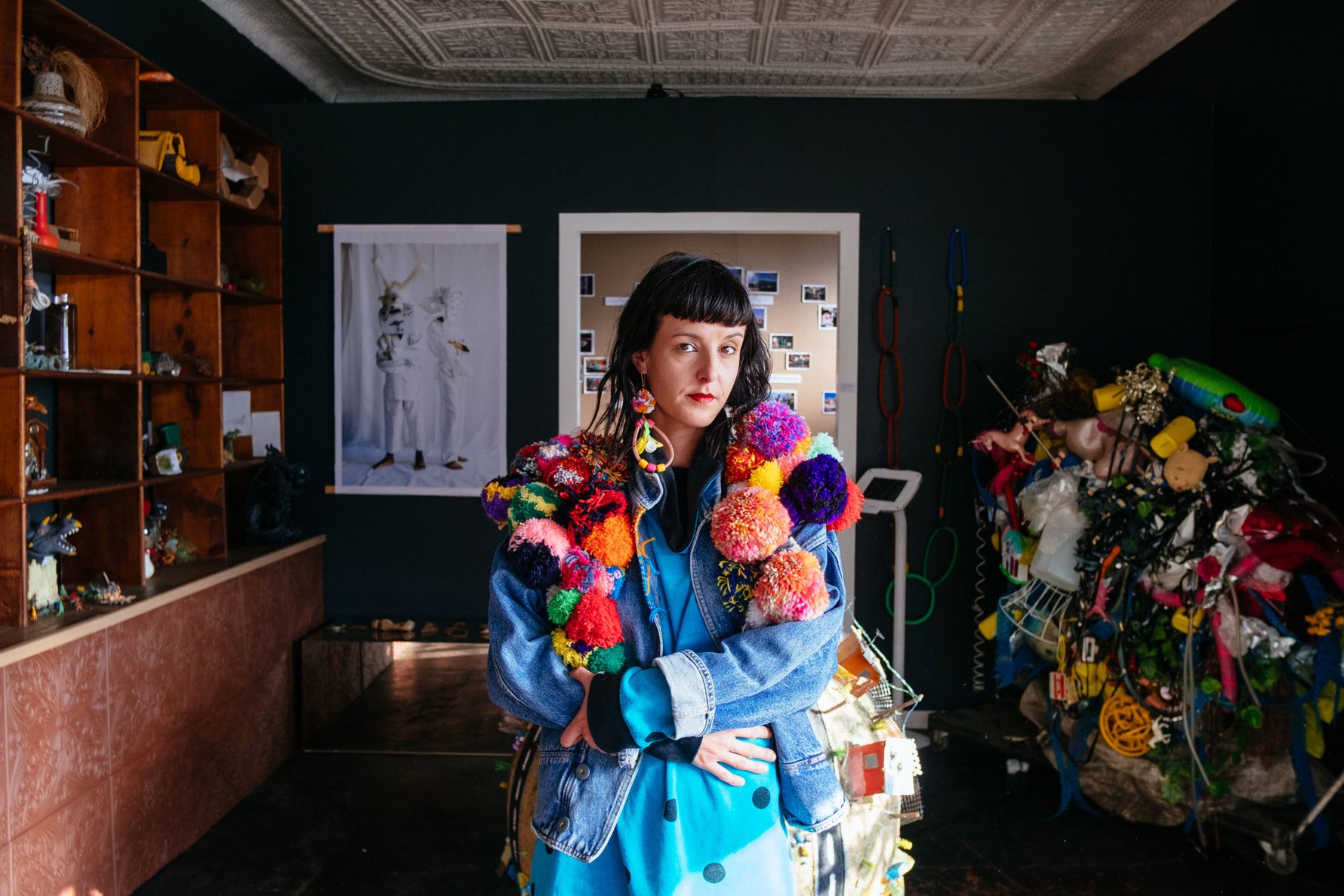
Tamzyn Botha (you might know her as 'Limb') is a visual artist based in Brixton. Botha is also the director of Shade, a project space where waste, youth and the arts converge, and co-founder of the Brixton Light Festival which illuminates the streets of this close-knit community on Sat, Sep 2, 2023. With the highly anticipated light festival approaching, we wanted to find out more about the festival and the amazing work Shade is doing when it comes to sustainability. You can read more about Brixton here.
How and why did you start Shade?
I started it as a personal studio space, with the intention of opening it to other crafters and artists. And honestly, the more I invested my time into the community of Brixton, the more Shade became a response to the networks, youth and “outsiders” that live in and use the area. Shade is a community project space, and houses waste materials. Everything coming out of Shade is based on these two narratives. Projects using waste, exploring materials and reimagining worlds with the discarded.
"Our climate crisis often feels like disconnected conversations of science – between wordy academics and upper-class people who can afford the time and access resources to 'live better'. Simple eye contact and some genuine listening are often all that is needed."
What has Brixton got that is so special?
A community that is connected by many, many, many threads. Upon aerial view, these threads cross over each other connecting people from very different backgrounds and understandings into one vast network. The network feeds itself, intentionally or not.
Tell us about the upcoming Brixton Light Festival.
Shade curates the festival. This year we had a different approach. Leading up to the festival we put together several micro-events to address various demographics in the area such as youth, migrant communities and children. These were ways in which to ultimately map Brixton, connecting to these communities and collecting narratives around the area. These have formed the building blocks for curating the festival, responding to municipal concerns, addressing histories and paying homage to the many people that make up this colourful little space.
"Talk, act and do. Just go, it will never turn out how you planned. That is the magic, that's the freedom. That is what creates the texture and depth. Don't think too much, use your hands and get it done. After one turns into a few. Others will come, will feed into it and feed off of it. It can only start, with a start."
Shade combines art, waste transformation and community engagement. Why merge these?
These spaces naturally co-exist and are not mutually exclusive. Waste is created by everyone, is relative to everyone and ultimately connects everyone. Archiving and categorising waste simply allowed for crafters, artists and children to see the potential waste, a little easier. Brixton already is a community with a strong sense of engagement with both youth and waste reclaimers. I was welcomed warmly, and Shade really just facilitated projects within existing networks. Shade is an organic response, a catalogue of conversations.
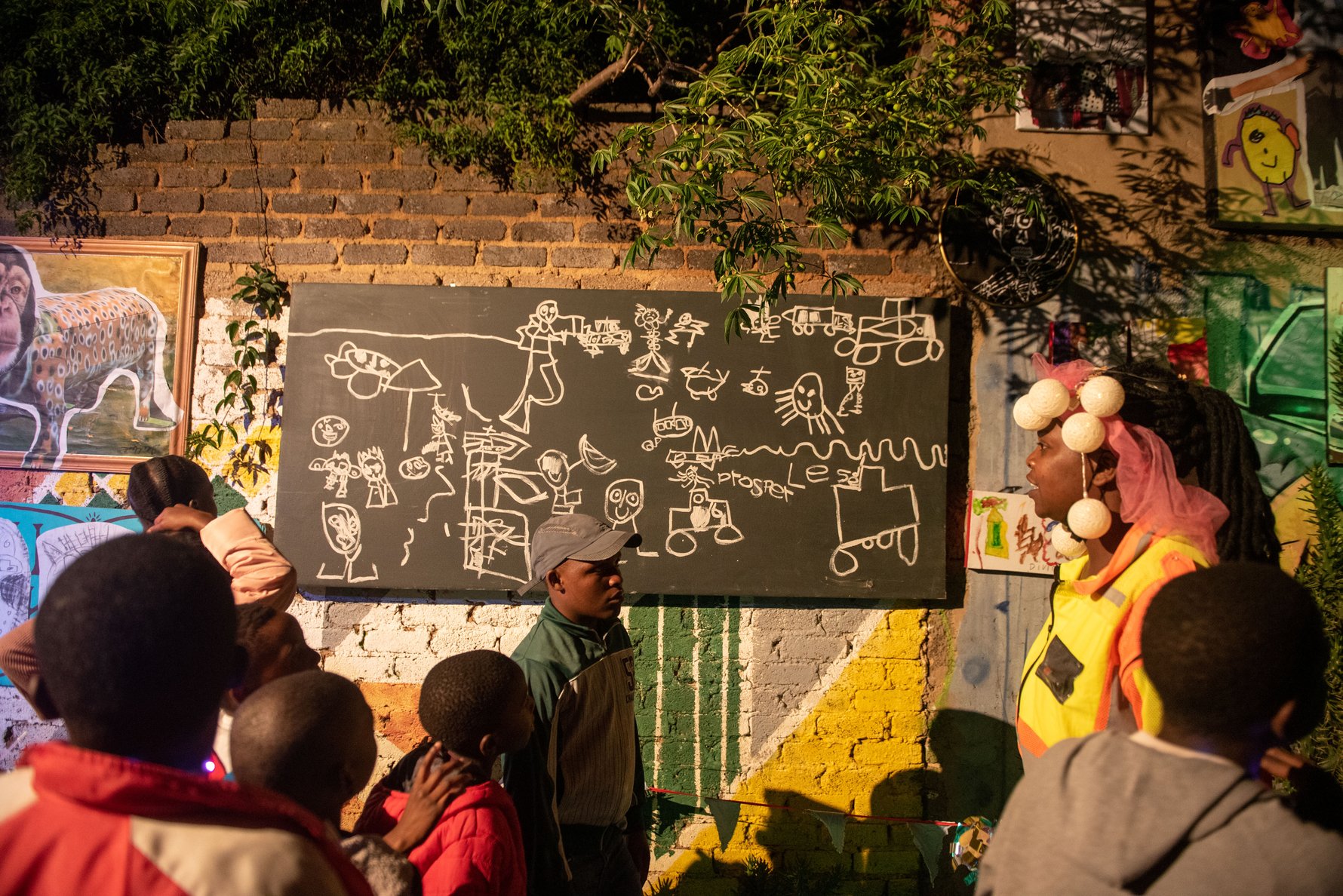
Brixton has a unique cultural and social context. How does Shade specifically address the needs and aspirations of this community?
Geographically the building sits on a main road passing through the suburb. Traversed by waste reclaimers, children and people living on either side of the suburb and beyond. Many of the connections forged have been between myself and passers-by. The junk and reimagined waste spilling out of Shade, present in the windows and across the walls, have also assisted as points of conversation between myself and passers-by. These simple acts of conversation have been the blueprint of Shade, starting off with, "Hello." I see Shade as a symbiotic organism, as a space within a community, fed and feeding. A hybrid creature, made up of many discarded parts – a sort of mirrored shrine reflecting the outside.
Shade has transformed neglected spaces into vibrant art installations. What has been the most impactful transformation?
To place one project above another is tricky. Much like Shade, as well as much like looking at a diverse and mostly connected community like Brixton, singling out one takes away from the entirety... but I will highlight the approach to the projects as a whole – attempting to holistically place all walks together. An intergenerational hybrid representation of crafters, children, teens, artists, designers, community workers, addicts, academics and so on. [It's] simply a reflection of a very abundant ecosystem, where every person [and] aspect serves a role beneficial to the whole.
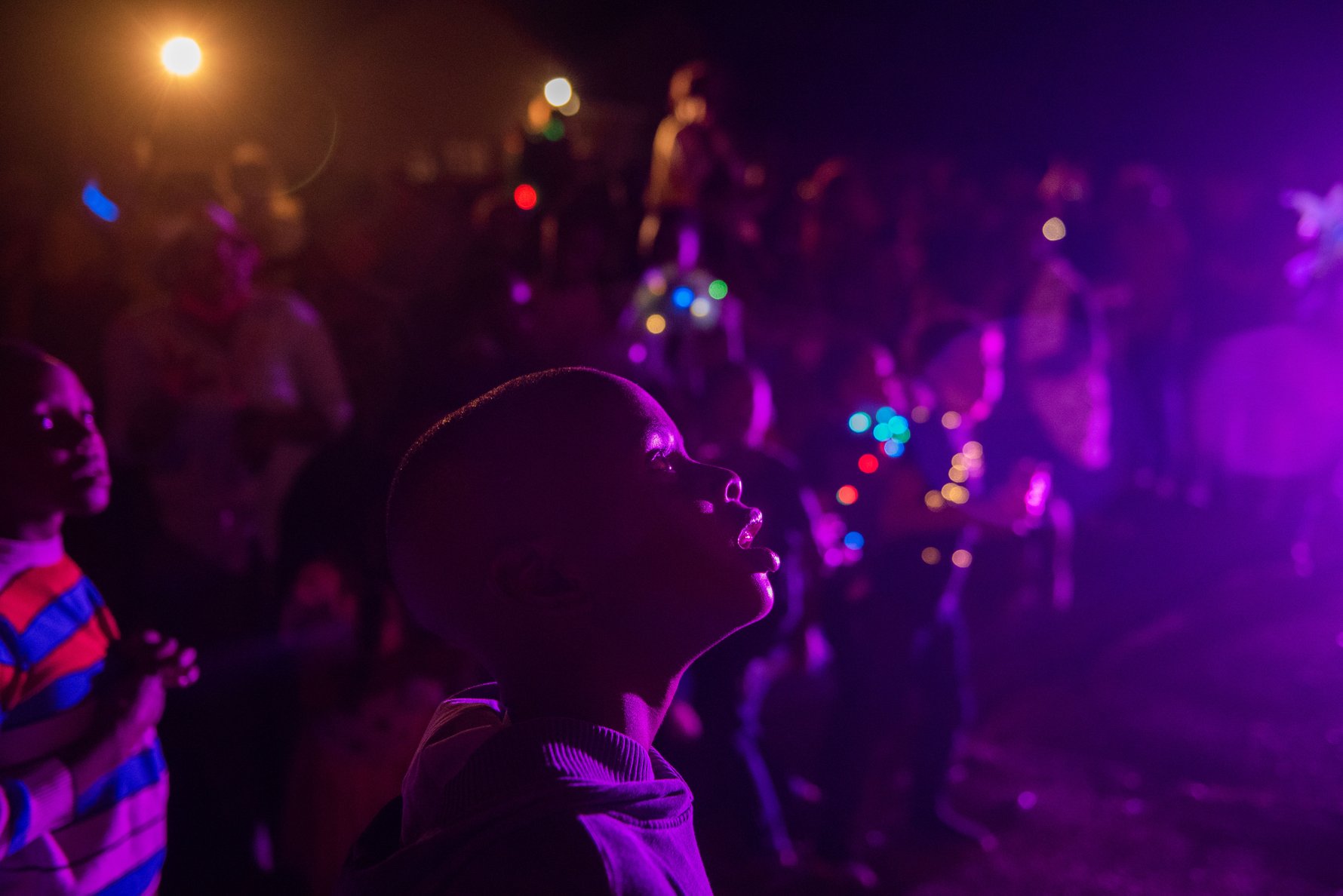
What is one sustainable practice people should incorporate in their lives and businesses?
Our climate crisis often feels like disconnected conversations of science – between wordy academics and upper-class people who can afford the time and access resources to "live better". But these conversations are almost unheard of if basic human connections between the vast majority are not at the foundation of our approach to sustainability. Simple eye contact and some genuine listening are often all that is needed with people. Because then the ice is broken, and deepening conversations around sustainable practises becomes more realistic.
"Acts of art can make for a more connected world."
What's missing in the conversation about waste?
People need common denominators to connect, and thus act upon. In Shade's case, waste is the common denominator – but really it's the conversations and connections from this that allow for actual on-the-ground, in-real-life, small, simple ways to live a little lighter and [with more] aware[ness] of the environment. Sustainability is a loaded word, but at the core [of it], if [you give] people more agency and more space to connect – and their place in the ecosystem is validated. Only then we can act upon these conversations collectively, [with] shared efforts and shared rewards. Truly shared micro-victories.
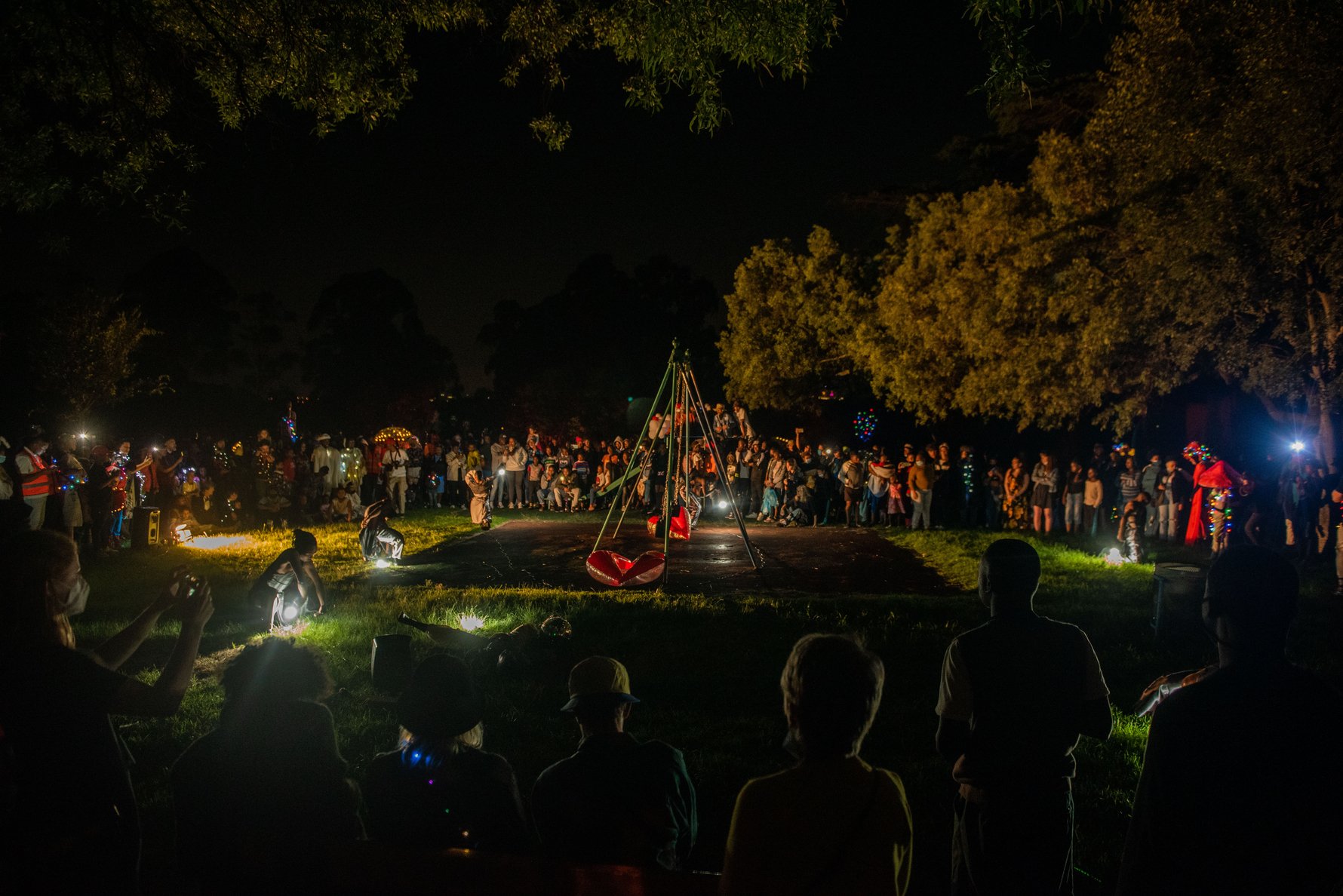
How can art change the world?
I am not entirely sure [it can]. Change is a strong word. I do think art can mould the world, and can take a little from here and a little from there. And with many "a little of this" and "some of thats" – art, and not just presented work but ways of living like how one cooks their food, which scent they enjoy in a garden, how they greet others, tones in the voice, that jacket they choose to wear in the morning, looking at the moon or watching a sunrise with a lover, can make for a more connected world. [These acts of art] are not really change, but rather amplifying some simple things we've possibly forgotten.
How do you source the waste materials central to Shade's installations?
[From] anywhere and everywhere... Much of the library is sourced from waste reclaimers from around the city who over the years I have developed connections with. Many of them have become aware of the range of materials (most non-recyclables) I am interested in, many of which are more of a romantic attachment to memory. I pick up a lot of materials directly off of the streets, at the parks during my daily dog walks, from dumps and from many old hoarders who send things my way. My pockets or purse are always lined with a what's what from a day outside of my house. It's a compulsion. I am just lucky to have packaged this soft addiction to hoarding memories through objects in a way that seems to have benefited some people. Things thrown away or forgotten are so very, very important to me, for many reasons and sometimes beyond my comprehension.
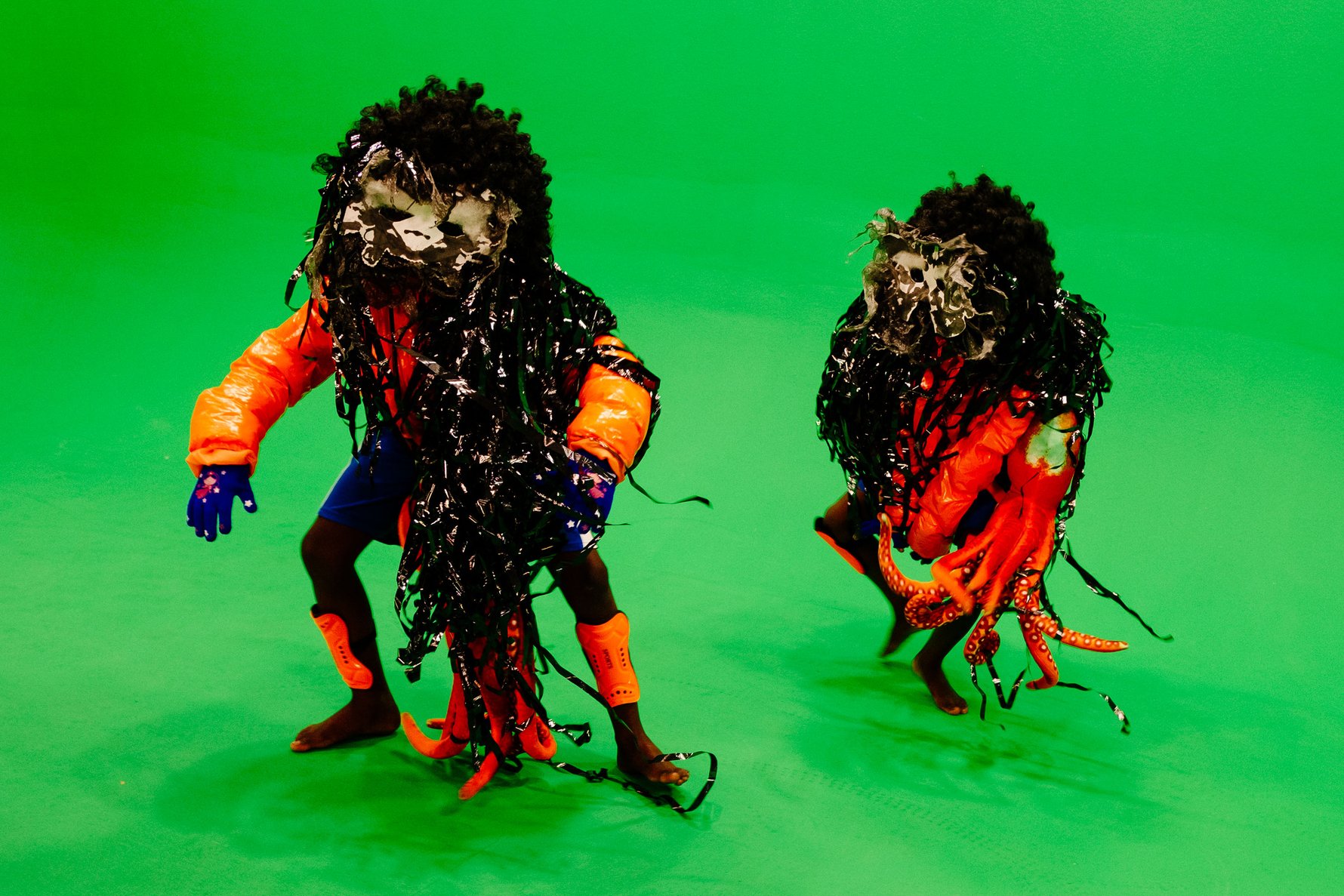
How has your background in art, design, and anthropology influenced your vision?
Woah, my background is in living and making and doing I guess! I started working in music festival design very young, and since then [I've] very much been learning as I go working in art direction and space design. I like to play, to improvise. To respond to things, people, music, concepts, communities. And that really has been the process Shade has taken as well, organically responding. A morphing vision that adapts to each new phase or layer.
"My pockets or purse are always lined with a what's what from a day outside of my house. It's a compulsion, I am just lucky to have packaged this soft addiction to hoarding memories through objects in a way that seems to have benefited some people."
What's the future of Shade in Brixton?
Physically, I don't have much time left of my lease at the current premises, which breaks part of my heart, because the space is as important to the work in many ways because of its location and positioning. So things are slightly in flux. But also exciting, as a new phase begins towards the end of this year. The future of Shade as a community arts practice in Brixton is to continue to socially collage the walls of this suburb, to see through and support the many years of work that people dedicating time to Shade and the community have done. Shade has only existed because of the support it has received, and I will personally honour them in service. Shout out to many, many people – thank you, specifically to Cammie Behrens and Lucy Msomi, without whom none of this would be possible.
What is the secret to successfully collaborating?
Agency and connection. Fostering a space where anyone can express, no matter how weird. Just a space to express comfortably.
What advice would you give to individuals or groups looking to initiate similar projects that blend art, community engagement and sustainability?
Talk, act and do. Just go, it will never turn out how you planned. That is the magic, that's the freedom. That is what creates the texture and depth. Don't think too much, use your hands and get it done. After one turns into a few. Others will come, will feed into it and feed off of it. It can only start, with a start.
What is one "sustainable" practice that isn't as sustainable as we think?
Living, but we can try to address that :)
What have been the most rewarding moments in your journey with Shade so far?
The people I have met outside the space, on the corner outside building. Many cruisers, with tales and stories that have inspired me to continue the work.
What brought you to Joburg or makes you stay here?
The hustle sentiment, [and that] nobodies can be somebodies here.
Home is...
Everywhere and nowhere (but deep down, it's on the wild coast for me).
Your favourite Joburg suburb, and why you choose it?
Brixton. I feel safe here, supported and connected.
What three things should a visitor not leave Joburg without seeing or experiencing?
The City Centre's Drill Hall (and meeting the gods running that space – Exotically Divine), B’sorah (an incredible hike less than an hour away from Johannesburg) and Dunusa (a massive open-air thrifting market in the City Centre).
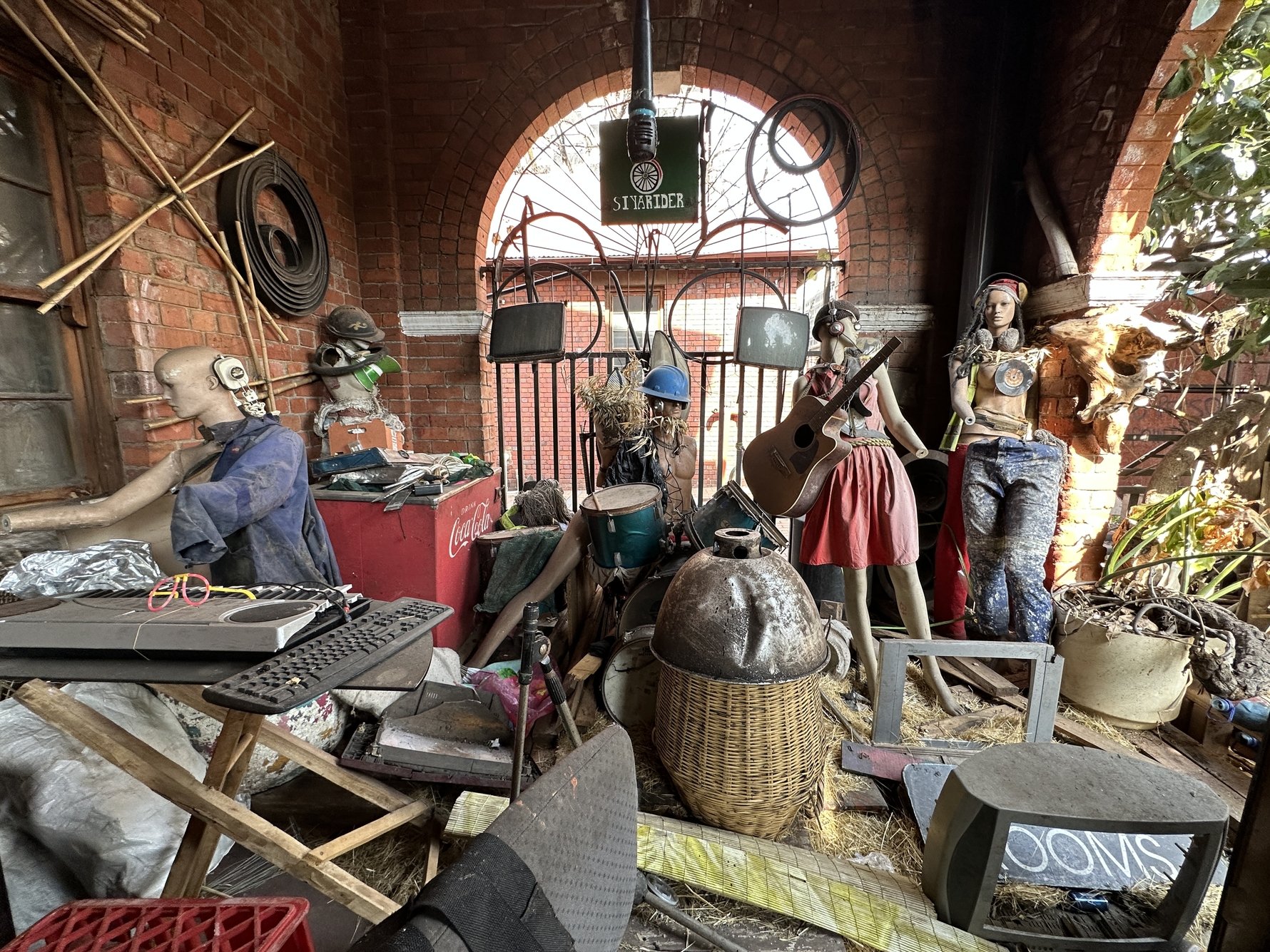
If you could buy one Joburg building which would it be?
Too many – but because of its location and what it could mean for Brixton, the old Brixton Rec Centre.
If you are the Joburg mayor for one day (average tenure) what would you change?
Waste Management to be run by the people who actually run it, the Bagerezi (informal recyclers and waste reclaimers).
Favourite Joburg label, and why?
I'm still into buying second-hand clothing and stuff obviously – not a label but my favourite shop, Gale's Charity for Cats in Melville.
What makes someone a Joburger?
The hustle.
What do you love most about Joburg?
The people.
What do you least like about Joburg?
The polarity of class.
Your number-one tip for a first-time visitor to Joburg?
Engage.
The perfect weekend in Joburg includes...
A dance, a sunrise, a hike and cute food.
Three words that describe this city
Energetic, curious, feverish.
Check out some of our previous #MyJoburg interviews for more insights into the city:
#MyJoburg with Yasmin Furmie, content creator and co-owner of SiSi The Collection
#MyJoburg with Kay Kay Ribane, visual artist and co-founder of USURPA Gallery.
#MyJoburg interview with entrepreneur, Olwethu Leshabane.
#MyJoburg interview with Banele Khoza, artist and founder of BKhz Gallery.
#MyJoburg interview with Lelowhatsgood, creative trailblazer and founder of the VNJ Ball.


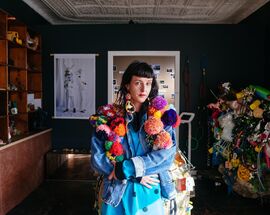
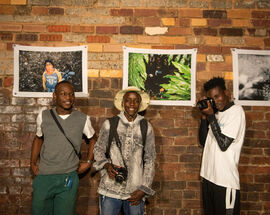
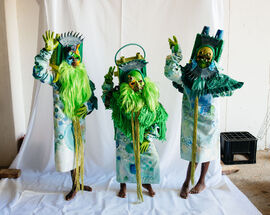
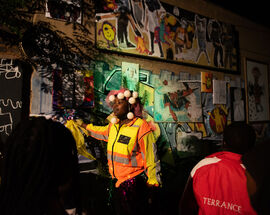


Comments